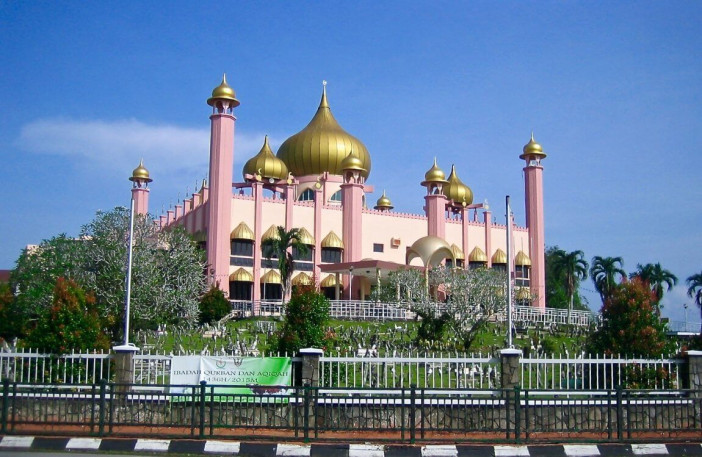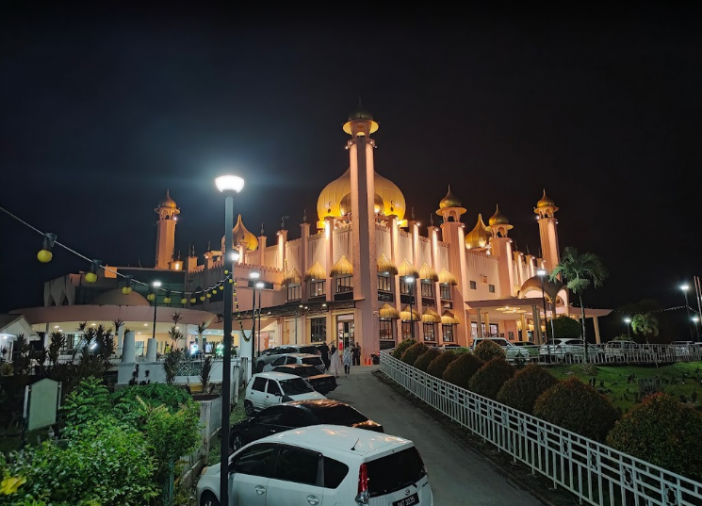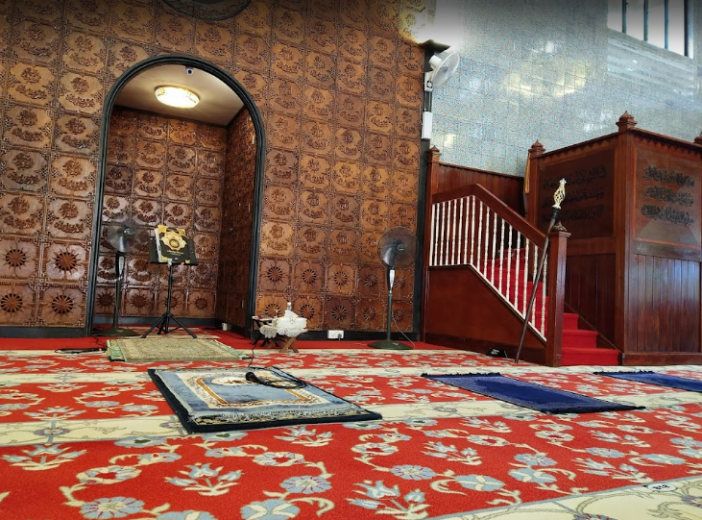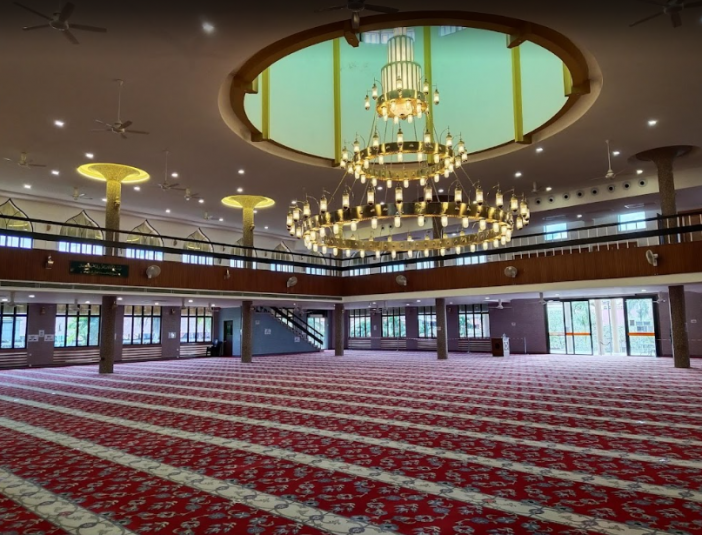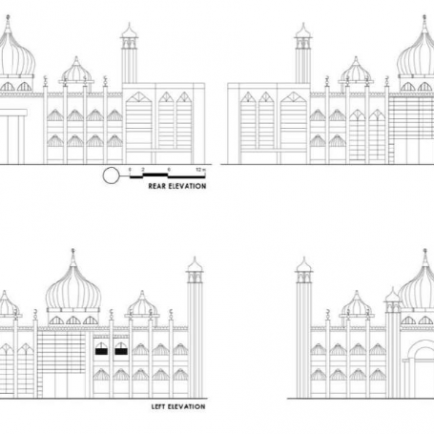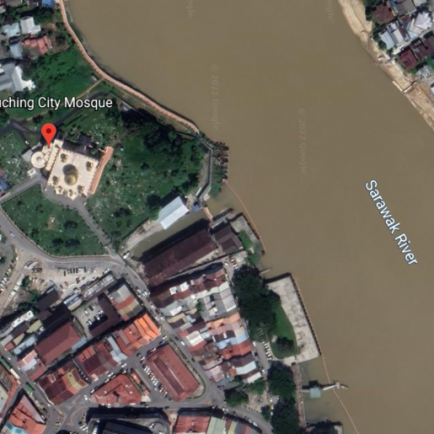Bandaraya Kuching Mosque
History
Urban and Architectural
The current mosque's architecture was formulated in the
1960s and features a main central onion-shaped dome of Mughal influence, it is
flanked with four smaller domes which sit on an open elevated base. It has no
detached minaret: instead, there are six smaller attached minarets, each
surmounted with cupolas and onion-shaped domes. The mosque's building is
finished with modern-style crenellations on the parapet wall with a series of
moon-crescent finials on top of its pilasters. The main central onion-shaped
dome is made out of lightweight metal in golden yellow color that is used to indicate
the main prayer hall located below. The large onion-shaped dome is cis used to
express the importance or grandeur of the structure as compared to its surroundings.
At the front is a pavilion linked to the main entrance, with a modernist approach dome, perched on a terrazzo-clad platform with three leading steps, up to the main prayer hall, and two more steps to the upper female prayer gallery. The interior space is passively lit with natural lighting through glass windows and louvred blocks.
The Intricate Italian porcelain tiles ornament were used in
the interior walls of the mosque and has added to the charm to the mosque. A
grand chandelier from France continues to function. The gibla front wall is
marked with a blind arch featuring repetitive names of Allah prescribed on a
teak wood tile. It is also where the mihrab niche is located, and a timber
mimbar platform placed to its right, The Kuching City Mosque has a two-storeyed
building housing the administration office, classrooms, a guest room and a
meeting room next to the mosque building
Description
Bandaraya Kuching Mosque is a mosque in Kuching, Sarawak. Formerly the State Mosque of Kuching, it is off Jalan Market, on the site of the first mosque that was built in 1847 by the family of a famous Malay leader, Datuk Patinggi Ali.
References
https://www.iloveborneo.my/tahukah-anda-sejarah-masjid-bahagian-kuching/
https://itc.gov.my/listings/masjid-bahagian-kuching-masjid-bandaraya-kuching-sarawak/
Aziz, A. A., 2016. MASJID - Selected Mosques and Musollas in Malaysia, ATSA Architects Sdn. Bhd.
Details
Location
332, Jalan Datuk Ajibah Abol, Kampung No3, 93400 Kuching, Sarawak,
Worshippers
4000
Owners
Datuk Patinggi Ali
Architect Name
Year of Build
1968
Area
106
Drawings
Map
History
Urban and Architectural
The current mosque's architecture was formulated in the
1960s and features a main central onion-shaped dome of Mughal influence, it is
flanked with four smaller domes which sit on an open elevated base. It has no
detached minaret: instead, there are six smaller attached minarets, each
surmounted with cupolas and onion-shaped domes. The mosque's building is
finished with modern-style crenellations on the parapet wall with a series of
moon-crescent finials on top of its pilasters. The main central onion-shaped
dome is made out of lightweight metal in golden yellow color that is used to indicate
the main prayer hall located below. The large onion-shaped dome is cis used to
express the importance or grandeur of the structure as compared to its surroundings.
At the front is a pavilion linked to the main entrance, with a modernist approach dome, perched on a terrazzo-clad platform with three leading steps, up to the main prayer hall, and two more steps to the upper female prayer gallery. The interior space is passively lit with natural lighting through glass windows and louvred blocks.
The Intricate Italian porcelain tiles ornament were used in
the interior walls of the mosque and has added to the charm to the mosque. A
grand chandelier from France continues to function. The gibla front wall is
marked with a blind arch featuring repetitive names of Allah prescribed on a
teak wood tile. It is also where the mihrab niche is located, and a timber
mimbar platform placed to its right, The Kuching City Mosque has a two-storeyed
building housing the administration office, classrooms, a guest room and a
meeting room next to the mosque building
Description
Bandaraya Kuching Mosque is a mosque in Kuching, Sarawak. Formerly the State Mosque of Kuching, it is off Jalan Market, on the site of the first mosque that was built in 1847 by the family of a famous Malay leader, Datuk Patinggi Ali.


